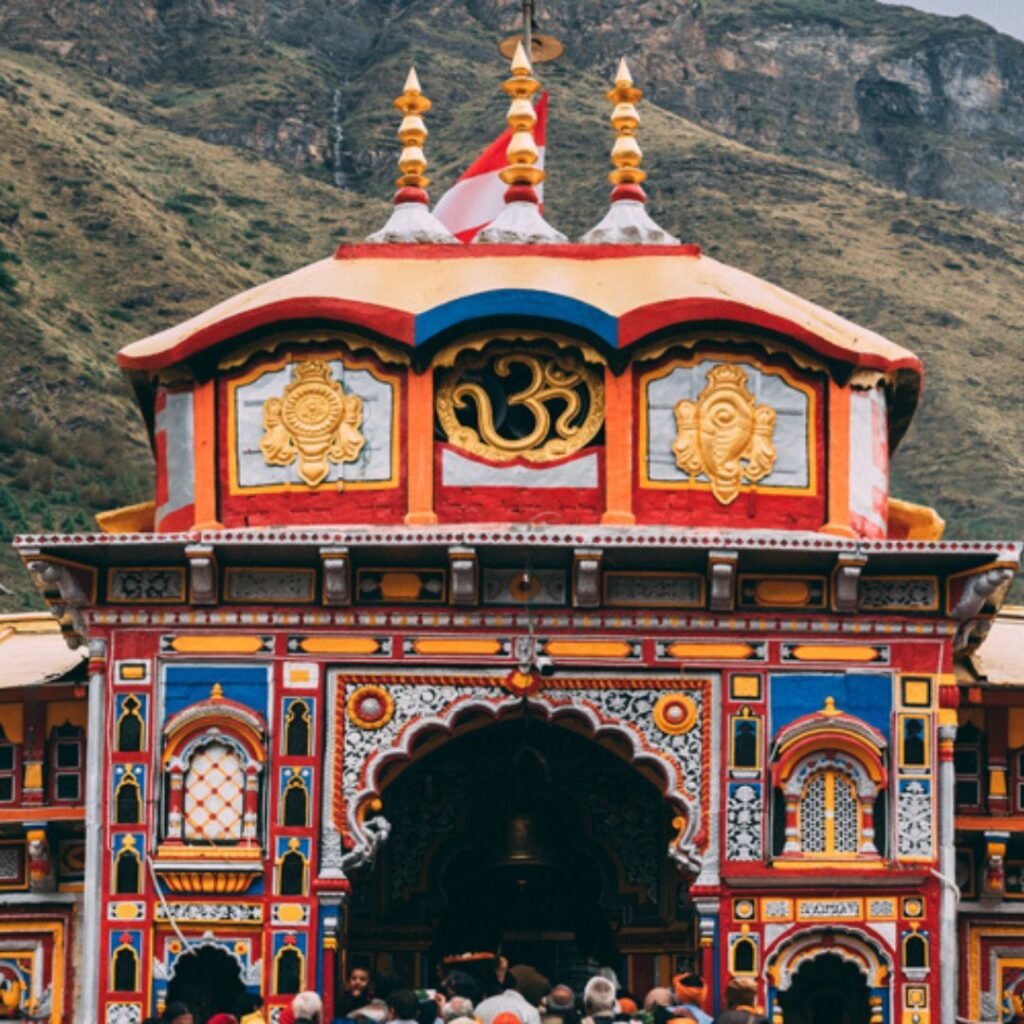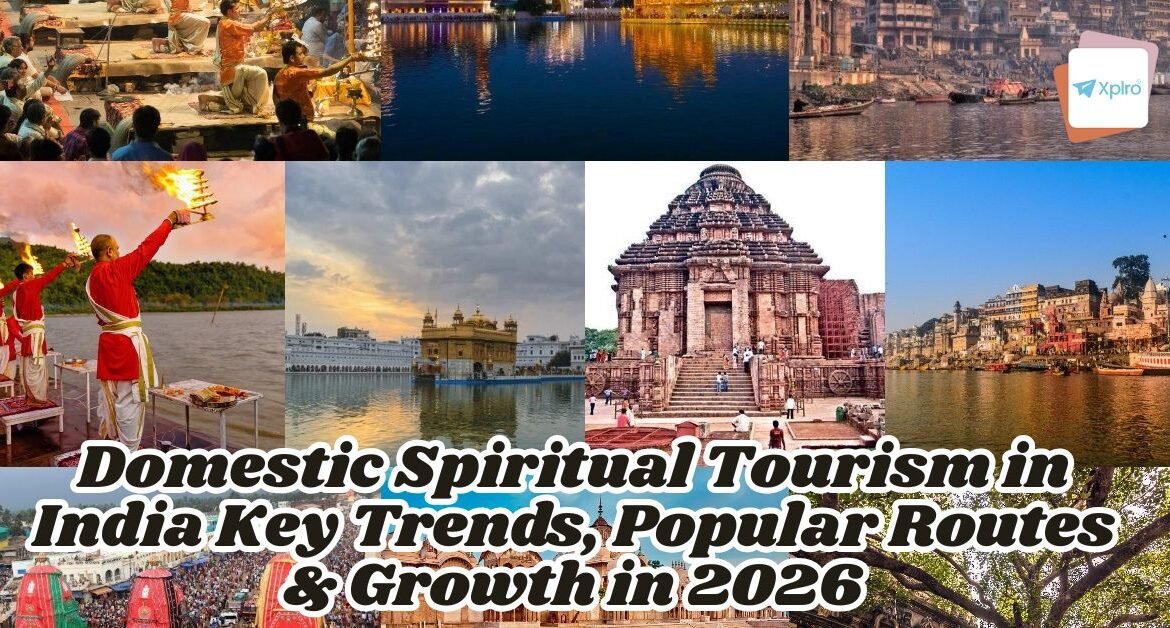Domestic spiritual tourism in India is evolving rapidly, and 2026 is set to be a landmark year. This comprehensive guide explores the latest trends shaping pilgrimage travel across the country—covering new popular routes, rising spiritual circuits, and shifts in traveler behavior. With more Indians seeking meaningful journeys, wellness-oriented pilgrimages, heritage temple trails, and eco-spiritual retreats are gaining popularity. The blog provides in-depth insights into how spiritual tourism is growing within India, supported by improved connectivity, government initiatives, and digital booking platforms that make religious travel easier than ever. From iconic destinations like Varanasi, Ayodhya, and Puri to emerging spiritual hubs such as Kedarnath, Dwarka, and Srisailam, we break down the routes attracting domestic travelers in 2026.
You’ll also learn how modern pilgrims prefer culturally immersive experiences, sustainable stays, guided rituals, and festival-based travel. This analysis highlights key statistics, market growth patterns, and travel trends that are shaping India’s spiritual tourism landscape. Whether you’re planning a pilgrimage, writing research, or studying industry trends, this guide offers valuable, updated insights to help you explore India’s spiritual travel boom in 2026.
1. Understanding Spiritual Tourism in India
- Definition: Travel motivated by religious, cultural, or spiritual experiences.
- Scope: Includes pilgrimages, temple visits, meditation retreats, yoga centers, and heritage circuits.
- Significance: Beyond faith, spiritual tourism contributes to employment (80+ million jobs) and boosts local economies.
2. Key Trends Shaping Domestic Spiritual Tourism in 2026
Trend 1: Tech-Enabled Pilgrimage
- Online booking of darshan passes, e-puja services, and virtual temple tours.
- Apps integrating maps, rituals, and crowd management.
Trend 2: Infrastructure Upgrades
- Government focus on PRASHAD Scheme (Pilgrimage Rejuvenation and Spiritual Augmentation Drive).
- Better roads, airports, and rail connectivity to major shrines.
Trend 3: Rise of Wellness + Spirituality
- Fusion of yoga retreats with temple visits.
- Ayurveda resorts near pilgrimage hubs.
Trend 4: Family-Oriented Travel
- Multi-generational trips combining devotion with leisure.
- Packages offering both religious circuits and sightseeing.
Trend 5: Regional Diversity – Domestic Spiritual Tourism in India
- Southern India: Temple architecture & cultural festivals.
- Northern India: Himalayan pilgrimages (Char Dham, Amarnath).
- Western India: Shakti Peeths & Jain temples.
3. Popular Spiritual Routes in India
Northern Routes
Char Dham Yatra – Uttarakhand

The Char Dham Yatra in Uttarakhand is one of India’s most sacred pilgrimages, covering Yamunotri, Gangotri, Kedarnath, and Badrinath. Nestled in the Himalayas, these shrines open every summer and attract millions of devotees seeking spiritual purification. Completing the yatra in a clockwise direction is believed to wash away sins and ensure moksha.
Vaishno Devi – Jammu

The Vaishno Devi pilgrimage in Jammu is among the most visited shrines in India, drawing nearly one crore devotees annually. Located near Katra, the journey involves trekking or helicopter rides to the holy cave where Mata Vaishno Devi is worshipped. With RFID-based registration and upgraded facilities, the shrine continues to be a hub of devotion and tourism in 2026.
Amarnath Yatra – Jammu & Kashmir

The Amarnath Yatra is a revered Himalayan pilgrimage dedicated to Lord Shiva. Devotees trek to the sacred cave to witness the naturally formed ice Shivling, symbolizing Shiva’s eternal presence. With helicopter services, medical support, and modern packages, the 2026 Amarnath Yatra blends tradition with comfort, making it one of India’s most spiritually powerful journeys.
Southern Routes
Tirupati Balaji – Andhra Pradesh
The Tirupati Balaji Temple in Andhra Pradesh is the richest and most visited temple in the world. Dedicated to Lord Venkateswara, it sits atop the Tirumala hills and showcases stunning Dravidian architecture. Millions of pilgrims flock here annually, with online darshan booking and improved facilities making the experience smoother in 2026.

Rameswaram & Madurai – Tamil Nadu
The Rameswaram and Madurai circuit in Tamil Nadu is a blend of Shaivite and Vaishnavite traditions. Rameswaram’s Ramanathaswamy Temple, one of the twelve Jyotirlingas, is famed for its long corridors and sacred wells, while Madurai’s Meenakshi Temple is a masterpiece of Dravidian architecture. Together, they form a spiritual and cultural highlight of South India.

Sabarimala – Kerala
The Sabarimala pilgrimage in Kerala is unique for its rituals and mass participation. Dedicated to Lord Ayyappa, the temple opens during Mandala and Makaravilakku seasons, attracting millions of devotees. Strict eco-friendly practices, crowd management, and online booking systems make the 2026 pilgrimage more organized and sustainable

Western Routes
Somnath & Dwarka – Gujarat

The Somnath and Dwarka circuit in Gujarat is a sacred journey connecting Lord Shiva and Lord Krishna. Somnath houses the first Jyotirlinga, symbolizing Shiva’s cosmic power, while Dwarka is revered as Krishna’s kingdom and one of the Char Dhams. Together, these coastal shrines offer a blend of devotion, history, and scenic beauty.
Shirdi – Maharashtra

The Shirdi Sai Baba Temple in Maharashtra is a spiritual hub for devotees of Sai Baba, who preached love, compassion, and unity. The temple complex includes Sai Baba’s Samadhi and attracts millions of visitors across faiths. With improved infrastructure and tourism facilities, Shirdi continues to be a top pilgrimage destination in 2026
Eastern Routes
Jagannath Puri – Odisha
The Jagannath Temple in Puri, Odisha, is world-famous for its annual Rath Yatra. In 2026, the grand chariot festival will be held on July 12, drawing millions of devotees who pull the massive wooden chariots of Lord Jagannath, Balabhadra, and Subhadra. This vibrant celebration symbolizes unity, devotion, and cultural heritage.

Kamakhya Temple – Assam
The Kamakhya Temple in Assam is one of India’s most powerful Shakti Peeths, renowned for its tantric traditions. Located atop Nilachal Hill in Guwahati, it is especially famous for the Ambubachi Mela held in June. With improved connectivity and facilities, Kamakhya continues to attract pilgrims and spiritual seekers from across India

4. Growth Outlook for 2026
- Market Size: Expected CAGR of 10–12% till 2028.
- Drivers:
- Rising middle-class participation.
- Government schemes (PRASHAD, Swadesh Darshan).
- Improved digital marketing by states.
- Challenges:
- Overcrowding at major shrines.
- Need for sustainable tourism practices.
5. Comparison: Spiritual Tourism vs Leisure Tourism
| Aspect | Spiritual Tourism (2026) | Leisure Tourism (2026) |
|---|---|---|
| Motivation | Faith, devotion, inner peace | Relaxation, adventure, luxury |
| Share of Domestic Travel | ~60% | ~40% |
| Popular Destinations | Temples, shrines, yoga retreats | Beaches, hill stations, cities |
| Seasonality | Peak during festivals & yatras | Peak during holidays & summers |
| Economic Impact | Boosts local economies, small vendors | Higher spend on hotels & resorts |
| Government Focus | PRASHAD, Swadesh Darshan | Smart Cities, tourism circuits |
Conclusion
By 2026, domestic spiritual tourism in India will stand as the backbone of the country’s travel industry, accounting for nearly 60% of all domestic journeys. With government initiatives like the PRASHAD Scheme and Swadesh Darshan, improved infrastructure, and digital innovations such as online darshan booking and e-puja services, spiritual travel is becoming more accessible, organized, and family-friendly.
From the Char Dham Yatra in Uttarakhand to Jagannath Puri in Odisha, and from Tirupati Balaji in Andhra Pradesh to Shirdi in Maharashtra, India’s spiritual routes are not just places of worship but vibrant cultural hubs that fuel local economies and preserve heritage. Unlike leisure tourism, which focuses on luxury and adventure, spiritual tourism offers faith-driven experiences, wellness integration, and cultural immersion, making it uniquely resilient and sustainable.
As India’s middle class expands and interest in heritage deepens, spiritual tourism is projected to grow at a CAGR of 10–12%, reaching new heights by 2028. For travelers, this means more organized circuits, better facilities, and opportunities to combine devotion with discovery. For the industry, it signals a golden era where pilgrimage and spirituality redefine domestic tourism in India.
FAQs
1. What is spiritual tourism in India?
Spiritual tourism in India refers to travel motivated by faith, devotion, and cultural heritage, including pilgrimages, temple visits, yoga retreats, and meditation centers.
2. Why is spiritual tourism important in India?
It contributes to cultural preservation, boosts local economies, and accounts for nearly 60% of domestic travel.
3. What are the most popular spiritual routes in India?
Char Dham Yatra, Vaishno Devi, Tirupati Balaji, Jagannath Puri, Shirdi, Somnath-Dwarka, Rameswaram-Madurai, Amarnath, Sabarimala, and Kamakhya Temple.
4. How is spiritual tourism different from leisure tourism?
Spiritual tourism is faith-driven and seasonal around festivals, while leisure tourism focuses on relaxation, adventure, and luxury.
5. What government schemes support spiritual tourism in India?
The PRASHAD Scheme and Swadesh Darshan focus on infrastructure, heritage conservation, and pilgrimage rejuvenation.
6. What is the expected growth of spiritual tourism in India by 2026?
It is projected to grow at a CAGR of 10–12%, reaching USD 59 billion by 2028.
7. Which is the most visited temple in India?
Tirupati Balaji Temple in Andhra Pradesh, attracting millions of devotees annually.
8. What is the Char Dham Yatra?
A Himalayan pilgrimage covering Yamunotri, Gangotri, Kedarnath, and Badrinath, believed to cleanse sins and ensure moksha.
9. When does the Amarnath Yatra take place?
The Amarnath Yatra is held annually during July–August, when devotees trek to the cave to witness the ice Shivling.
10. What makes Vaishno Devi special?
Located in Jammu, Vaishno Devi is one of India’s most visited shrines, with RFID-based registration and improved facilities for pilgrims.
11. Why is Jagannath Puri famous?
Jagannath Temple in Odisha is renowned for its Rath Yatra, where millions pull the massive chariots of Lord Jagannath, Balabhadra, and Subhadra.
12. What is unique about Kamakhya Temple in Assam?
It is a Shakti Peeth known for tantric traditions and the Ambubachi Mela, symbolizing fertility and divine energy.
13. How does Shirdi attract devotees?
Shirdi in Maharashtra is dedicated to Sai Baba, who preached love and unity, attracting devotees across religions.
14. What is the significance of Somnath Temple?
Somnath in Gujarat is the first Jyotirlinga of Lord Shiva, symbolizing his cosmic power and resilience.
15. Why is Dwarka important in spiritual tourism?
Dwarka in Gujarat is revered as Lord Krishna’s kingdom and is part of the Char Dham circuit.
16. What is special about Rameswaram Temple?
Rameswaram’s Ramanathaswamy Temple is one of the twelve Jyotirlingas, famous for its long corridors and sacred wells.
17. Why is Madurai’s Meenakshi Temple famous?
It is a masterpiece of Dravidian architecture, dedicated to Goddess Meenakshi and Lord Sundareswarar.
18. What makes Sabarimala pilgrimage unique?
Dedicated to Lord Ayyappa, Sabarimala in Kerala involves strict rituals, eco-friendly practices, and mass participation.
19. How is technology changing spiritual tourism in India?
Online darshan booking, e-puja services, mobile apps, and digital crowd management are transforming pilgrimages.
20. What is the future of spiritual tourism in India?
By 2026, spiritual tourism will be more organized, tech-driven, and sustainable, blending devotion with wellness and cultural discovery.




